What is Hora Dance?
If you have ever gotten an invitation to a Jewish wedding, then, sooner or later, you’ll be roped into a circle of dancing people. The Hora Dance is a crucial (and exciting) part of any Jewish wedding. Other than being fun and extremely high-energy, this dance is also very rich in historical and cultural values.
This article can serve as your guide to everything and anything that is Hora-related
Hora Dance Definition
The hora dance (also known as “horo” or “oro”) is a dance form that exists in many Balkan countries. A special characteristic of the hora is that it is always danced in a linked circle. How people move within the circle, the tempo and the music will differ depending on the variation of the hora they’re performing.
You will typically find hora being danced at weddings and other joyous occasions in the community.
Hora Dance Origin
Hora, like every other folk dance out there, is ancient. Nobody knows for sure how long exactly it has been around. What we do know, though, is that it has been an integral part of the cultures in many European regions since time immemorial.
You will find variations of the hora being danced in Romania (where it’s most known), Bulgaria, and Moldova. You will find it as far down south as North Macedonia, where it’s known as “Oro.”
Other than technical differences like the dance technique, tempo, and music, the variation of hora differs significantly in terms of their meanings to the local populace.
For example, hora in Romania (“Hora Mare,” as it’s known there) has profound philosophical implications behind the dance. Meanwhile, it’s simply an expression of happiness and communal joy in Israel. The same applies to hora in Bulgarian culture. It’s mainly used as a way to have fun and to compete with one another.
This is partly the reason why the Romanian hora dance is so popular. The Hora Mare doesn’t just look pretty to the eyes, it also tells a story!
However, that doesn’t mean other hora variations are unpopular or not as good. As you will soon learn, there are great things about all of them!
Hora Dance Variants
There are dozens of different hora variants all across Europe. But there are two that are larger and more popular than the rest: the Romanian hora and the Israeli hora.
Romanian Hora
The Romanian Horă, also known as the “Hora Mare” or the “Great Hora,” is the most popular. It is danced primarily on special, joyous occasions in the community, such as weddings and festivals.
Horă is also a popular way for people in the rural areas of Romania to pass the time as a type of social entertainment.
The music is usually high-energy and bursting with happiness.
You most likely won’t find Hora Mare performances on TV or popular outlets unless you go and intentionally look for it. After all, it’s a folk dance, which is naturally less popular than modern dances. Nowadays, it may be even harder to find it being performed at weddings or special events in Romania.
However, Hora Mare has marked some of the most momentous historical events. For example, on the 2006-2007 New Year’s Eve, Hora Mare was broadcast to a worldwide audience to the tune of Hora Bucuriei (a popular horă dance song). Those were the years wherein Romania and Bulgaria officially joined the European Union!
Israel Hora
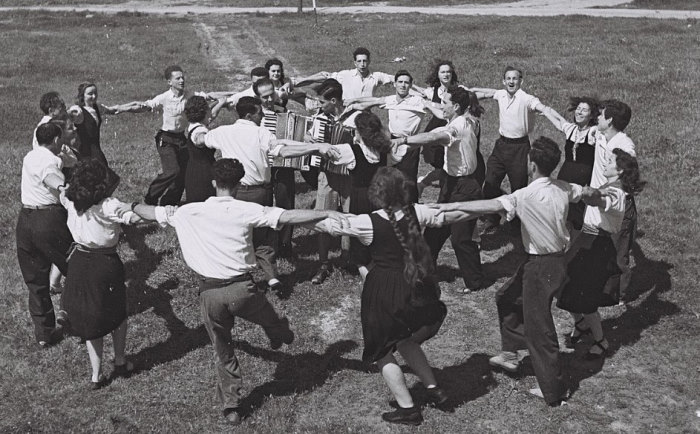
Hora enjoys greater visibility in Israel (or Israeli culture) than anywhere else. This dance form is only ever performed during traditional festivals or essential occasions in other countries. You’ll find Hora at almost every Israeli wedding. Occasionally, it’s performed at a boy’s bat mitzvah, too.
So, despite not being the only claimant to Hora, most people will be introduced to this dance through Israel, its people, and its customs.
But despite sharing the same name as the dances found in other European countries, the Israeli interpretation of Hora (הורה) has many differences. Namely, while the dance is still performed in a linked circle, unlike the Romanian horă, the Israeli version uses grapevine steps.
Other Hora Variants
As we mentioned earlier, hora exists in other countries and cultures outside Romania and Israel. Out of all of them, the dances in Moldova, Bulgaria (called “Horo”), and North Macedonia (“Oro”) are the most famous.
The Moldovan variant is very similar to the Romanian. So, usually, you will find them being referred to together (in both countries, the dance is called “Horă”).
In Bulgaria, their version of the dance is called “Horo.” It is still considered a circle dance, but, on occasion, people can dance in curled lines. The steps for horo are also very diverse. Depending on the area or sub-type of horo people are dancing, the steps can range from three to seven steps back to 5 to 6 steps forward.
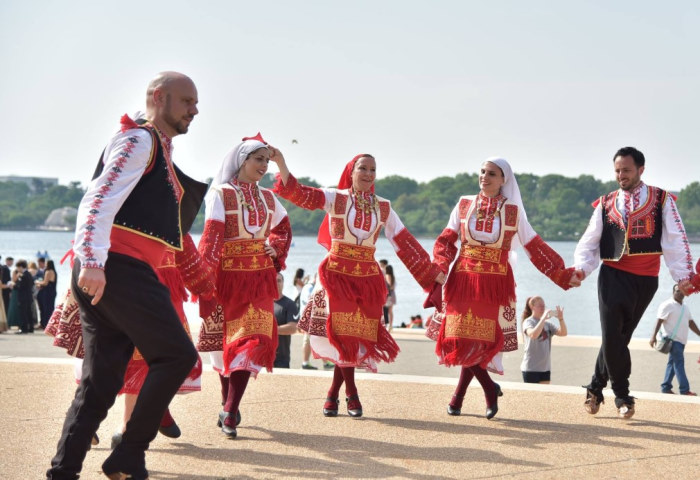
Wondering how many sub-types of horo there are? According to many sources, the number can be as high as 100!
The North Macedonian’s version, or “Oro,” is a standard circle dance. Men and women can join the circle and dance with their arms interlocked.
Hora Dance at Weddings
Hora, by nature, is a happy dance. No matter which variant it is or where it’s being performed, you will only ever find people performing hora at joyous events like weddings.
And when it comes to wedding dances, Israeli Hora is the most well-known.
All Guests Can Join The Hora Dance
Hora is a staple on the wedding day of any Israeli couple. All of the guests are invited to join the dancing circle and are asked to put as much energy and enthusiasm into their movements as possible.
The Bride And Groom Will Be Lifted On Chairs
Usually, people will dance in circles around the lucky couple, who would be lifted to the air on chairs or thrown about in a sheet. The bride and the groom will hold one end of a napkin or a handkerchief to signify their union.
It’s a fun time for everyone, both the couple and the attending guests!
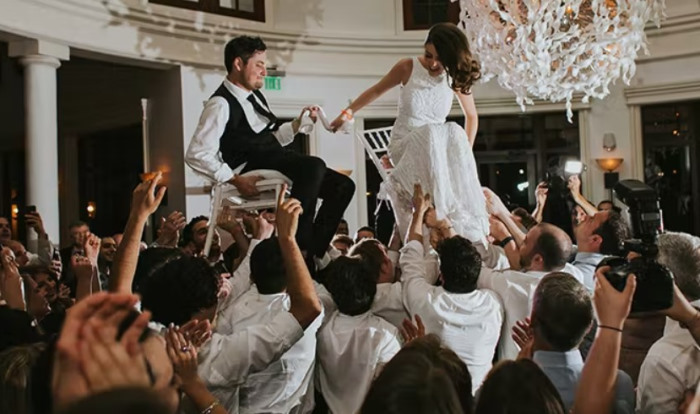
The Bride And Groom Will Decide When To Stop Hora Dancing
A hora performance will usually kick off the reception and stretch for hours. The couple is the ones that can decide when the hora circle stops. They got one of two options: it can end after the couple is properly introduced to all of the guests or after dinner. In the latter option, the hora circle is stopped to open the dance floors to other people.
Music Can Be Played By Either A Live Band Or A Dj
A live klezmer music band usually handles the music. They play traditional Jewish melodies that are popularly chosen for hora dancing. Alternatively, if the wedding is done on a budget, people can download klezmer classics and give their DJ a set-list to run through during the dance.
Men And Women Dance Separately In Orthodox Jewish Settings
But you will only find this in more liberal Israeli weddings. In more religious or orthodox settings, the dance will be tamer. The men and the women will dance the hora separately in different rooms.
Hora Dance Steps
Romanian Horă Steps
Horă is a pretty distinctive dance. In it, all participants will form up into a large circle and link their arms together. Then, the entire procession will move counter-clockwise while each dancer will move their feet in a unique sequence (three steps forward, one step backward).
Israeli Hora Steps
At the start, all the participants form a large circle. Then, each person will interlock their arms with the person next to them. The first step is to the left with the right foot. Then, it’s followed up with the left foot. All that footwork is done while the participants move together to the left.
If the group of participants is large enough, one circle may not be enough. In that case, you will find people dancing in several concentric circles or a spiral formation.
Hora Dance Music
The music you hear depends on the type of hora performed at that time. Usually, the chosen music will have folkloric roots, like klezmer music or Hava Nagila in Israeli hora. In Romania, horă is danced to the tune of Hora Bucuriei or Hora Uniril.
Instruments greatly vary between the regions.
A band performs klezmer music in Israel with all standard Western orchestral instruments, like the violin, viola, cello, and double bass. Sometimes, there are additions like trumpets and accordions into the ensemble, too.
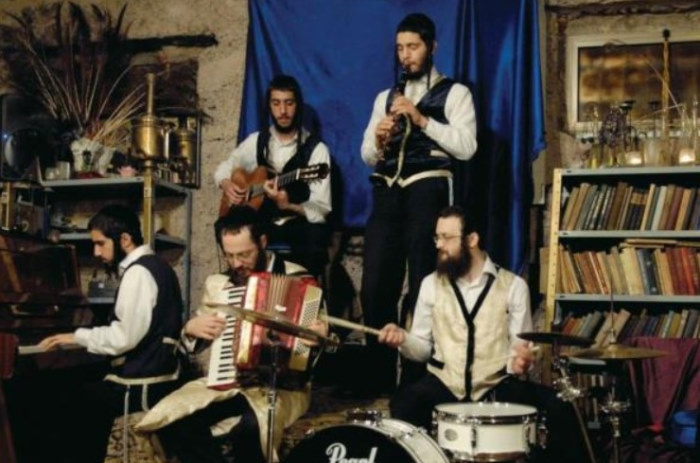
In Romania, a horă band handles all of the music. The group comprises many classical instruments like violin, viola, double bass, accordion, trumpet, pan pipes, and more.
Final Words
By learning about the hora dance, you learn not only about the culture and the folk dance of a single country. You get a closer look at how people in an entire region play, celebrate, and enjoy themselves.
And if you ever get the opportunity to join in on a hora dance circle, well, at least you now know what to do!

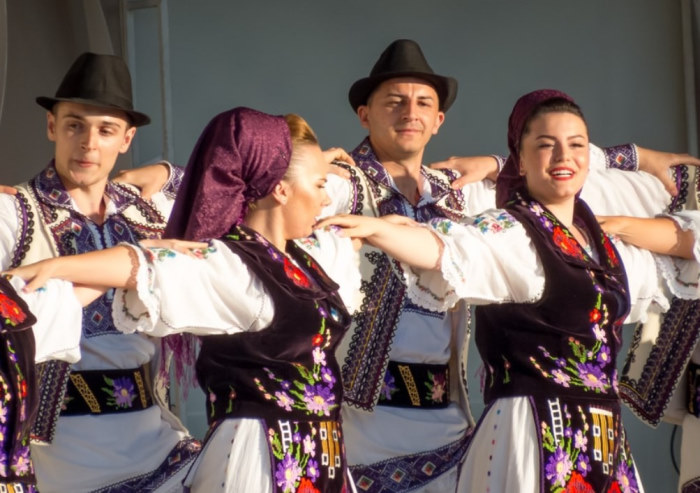
Nhận xét
Đăng nhận xét